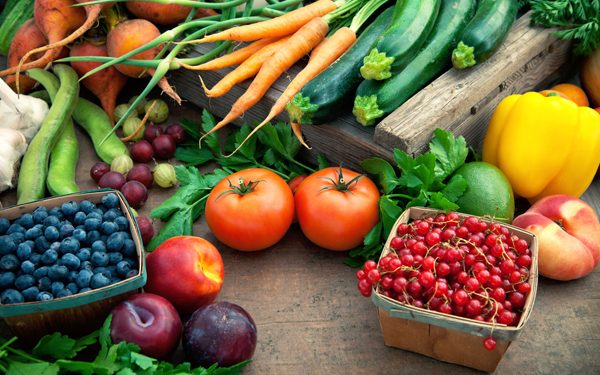These days, farmers markets full of edible riches are popping up faster than dandelions on a pesticide-free lawn. Piling your plate high with their fresh fruits and vegetables offers a hearty helping of health benefits: among them, reduced risk of serious health conditions, greater nutrition and more.
It’s easy to find a farmers market in your neck of the woods: Just check www.localharvest.org. But showing up is just half the battle. Here’s how to come home with the choicest produce.
And don't forget! Healthy food doesn't have to be expensive. Here's a great resource for grocery shopping on the cheap!
Be an early bird. The finest berries and most lively bunches of Swiss chard will often disappear within the first hour or so of the market’s opening, so it pays to wake up early to score the best stuff. Also, ask the sellers what their favorites are for that week. (You can make a second stop at the end of the day, when there are bargains to be had from farmers who don’t want to shuttle their remaining stock back home.)
Look for a rainbow. For the biggest array of nutrients and disease-busting antioxidants, select as many different-hued items as you can stuff into your canvas tote. Health-hiking antioxidants are often what give fruits and vegetables their splash of color. So, consuming a rainbow of produce will deliver a nutritional pot of gold (and colorful jewels, too).
This is a common tip found within the NASM Nutrition Coach program. Check it out to become credentialed as a nutrition expert.
Embrace the unknown. Some of the newfangled plant foods that show up only at farmers markets (and not your average supermarket produce aisle) can be the most flavorful and nutritious. So, when you see fresh currants, purple kohlrabi and donut peaches, don’t walk just walk on by! The sellers will be sure to love sharing what they know about these new-to-you foods, including serving and prep ideas.
Learn to love the ugly ducklings. Supermarket produce is often bred to have a uniform look and to withstand the rigors of shipping, rather than with flavor being front-of-mind. At farmers markets, though, those misshapen tomatoes and curvy carrots can be the best-tasting choices, and they’ll sometimes cost less, too.
Ask about organics. If you’re trying to limit your exposure to pesticides and eat with the health of the planet in mind, ask the farmers about their growing practices. Some small-scale farms employ organic practices, but they simply don’t get certified because of the cost or the hassle of doing paperwork.
Be loyal. After you’ve found a favorite vendor, become a regular customer. Once you develop a relationship with a farmer, he or she is more likely to award you with their “cream of the crop” and maybe even cut you a deal.
Freeze your assets. When local raspberries, broccoli and other produce are abundant and at friendly prices, be sure to buy extra. Then put a bunch on ice so you have to rely less on the meager, overpriced supermarket offerings when the snow starts flying. Many market stands will offer discounts for bulk buying.
Another Option: Visit Your Backyard Farmers Market (aka Garden)
Growing your own fruits, vegetables and herbs has plenty of perks. Though it won’t offer the myriad options available at a farmers market, it will give you access to fresh produce picks every day. Gardening itself offers benefits, including stress relief and extra exercise. And research shows it can also help you nail your daily fruit and vegetable quota. A 2016 study in the Journal of the Academy of Nutrition and Dietetics found that participants involved in gardening consumed, on average, one-half cup more fruits and veggies daily than those who did not develop their green thumb.
“It makes sense that if gardening increases your access to fresh vegetables and fruits, you’ll tend to eat more,” says Sharon Palmer, RDN, author of Plant-Powered for Life (The Experiment 2014).“Especially if there is a sense of accomplishment that comes with eating something that you’ve grown yourself.” If your home or apartment lacks the space for a garden, you can look for community garden space in the neighborhood or simply grow a few items like cherry tomatoes and herbs in containers.











